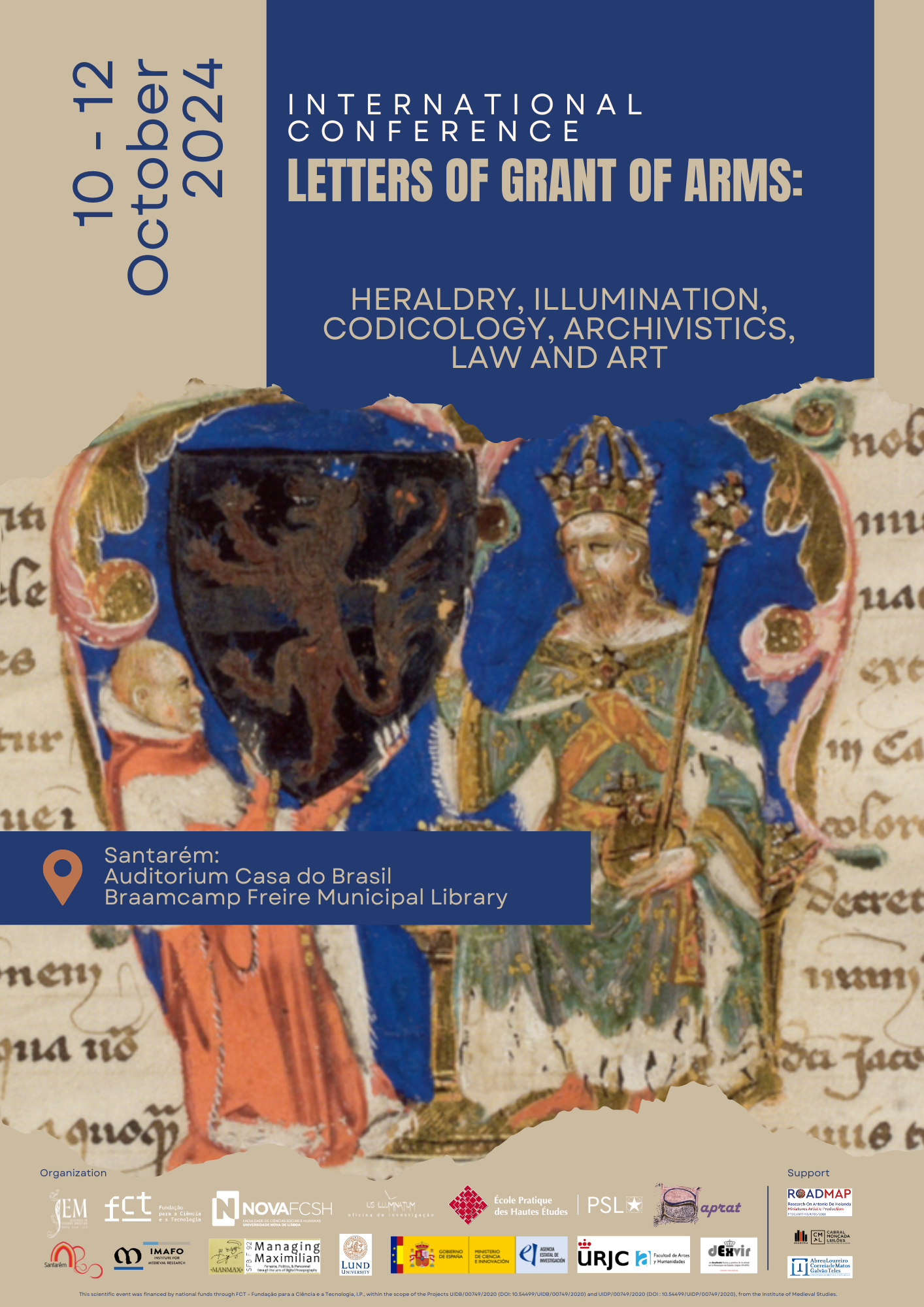International Conference: “Letters of Grant of Arms: heraldry, illumination, codicology, archivistics, law and art”
“Braamcamp Freire” Municipal Library and Casa do Brasil Auditorium, Santarém
10.10.2024 - 12.10.2024
Free admission

Organized by IEM researcher Miguel Seixas and Maria Alessandra Bilotta, the International Conference “Letters of Grant of Arms: heraldry, illumination, codicology, archival science, law and art” will take place between the 10th and 12th of October, in Santarém, at events distributed between the “Braamcamp Freire” Municipal Library and the Casa do Brasil auditorium.
Although iconographic sources attest to the practice of donating weapons by a lord to a follower as early as the end of the 12th century, the first records of heraldic grants by a princely authority appear in Italy and France in the first third of the 14th century, mainly in favor of cities and communes. From this time onwards, with a substantial increase at the end of the 14th century, the practice became widespread in most of the sovereign courts of Europe, benefiting individuals, officials, prelates and servants of the Prince, new knights, and nobles, as well as legal persons, such as convents, brotherhoods, cities, and communes.
From the beginning of the 15th century, chancelleries created several specific diplomatic forms for this type of princely favor and produced sumptuous illuminated diplomas. The process of granting a coat of arms then developed and became more complex, with several stages, some of which are still documented, involving letters of request, drawings of the proposed emblems, inscription in the chancery, and treasury records. , and prestigious copies kept by the recipients. The creation of these letters of arms also involved more and more people: advisors and family members of the Prince, agents of the chancellery and the treasury, royal heralds and genealogists, painters, and calligraphers.
Despite these documents’ numerical, political, social, artistic, and symbolic importance, historians have yet to devote much attention to them to date. Fortunately, recent research projects and a more systematic policy of digitization and online access have begun to extract such documents from archival limbo. However, the exact number of elements preserved in European archives remains to be determined, and their knowledge must be promoted. This collective effort will be one of the objectives of this colloquium, which brings together specialists in European collections to promote this heritage and encourage its study and preservation.
These charters of arms will be analyzed in several ways, including contextual monographic studies, which examine such documents in the context of specific political spaces, periods, or reigns; social studies of beneficiaries; diplomatic analyses related to the forms used and the registration and validation processes; approaches related to law, art history, and illumination; and, evidently, heraldic and emblematic considerations regarding the products of these concessions.
This colloquium is co-organized by IEM with the Santarém City Council and with several foreign university institutions – École Pratique des Hautes Études (Paris), Universidad Rey Juan Carlos (Madrid), Lund University, Imafo (Vienna Academy of Sciences) -, taking part in several scientific projects (Reserach group IUS ILLUMINATUM, Managing Maximilian, Dexvir, Roadmap), also counting on the support of the firm LMT – Consultores em História e Património and Academia Cabral Moncada.
Organizing Comittee:
Miguel Metelo de Seixas (IEM – NOVA FCSH),
Maria Alessandra Bilotta (IEM – NOVA FCSH),
Laurent Hablot (EPHE),
José Antonio Guillén Berrendero (URJC),
Andreas Zajic (AAS – IMR),
Martin Sunnqvist (LU),
Luís Mata (CMS)
